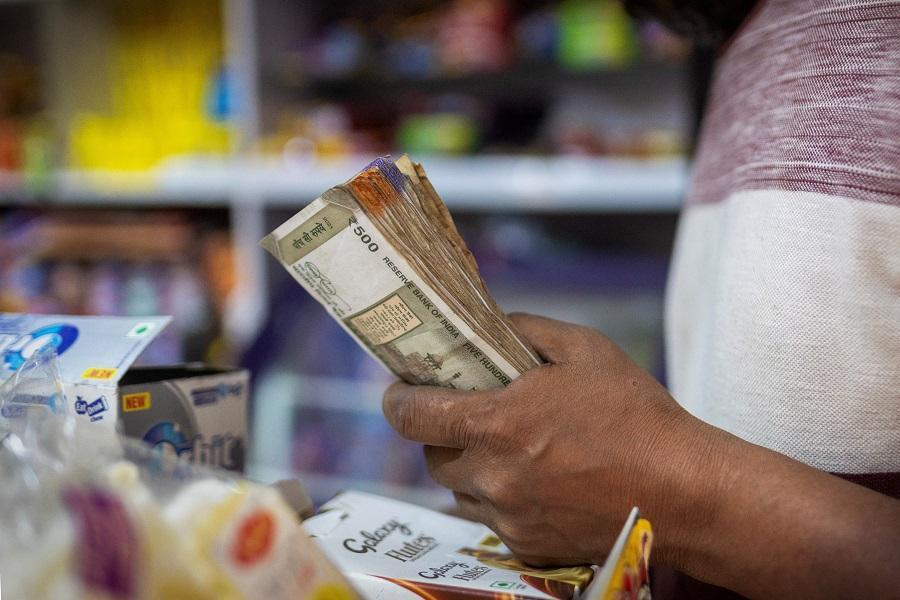
Rupee Under Pressure Amid Asia FX Dip, Outflows
The Indian rupee is expected to open weaker on Friday and trade with a modest depreciation bias amid a dip in its regional peers and lingering pressure from portfolio outflows as investors gird for an upcoming news-heavy week.
The 1-month non-deliverable forward indicated the rupee will open around 86.48-86.50 versus the U.S. dollar, compared with 86.4050 in the previous session. The rupee has been under pressure lately due to a combination of factors, including a sharp decline in the country’s foreign exchange reserves, a widening trade deficit, and a surge in oil prices.
The Asian currency space has been witnessing a decline in recent days, with the Indonesian rupiah, Malaysian ringgit, and the Philippine peso all falling to multi-year lows. The slump in the rupee has been exacerbated by the decline in the Asian currencies, as investors seek safer havens amid growing concerns over the global economy.
The rupee has been particularly vulnerable to the decline in the Asian currencies, as many Indian companies have significant overseas debt denominated in these currencies. A decline in these currencies makes it more expensive for Indian companies to service their debt, which can have a negative impact on their profitability and overall economic growth.
In addition to the decline in the Asian currencies, the rupee has also faced pressure from portfolio outflows. Investors have been selling Indian assets in recent weeks, citing concerns over the country’s fiscal deficit and the impact of the ongoing lockdowns on the economy.
The lockdowns have had a significant impact on India’s economy, with many businesses forced to shut down or operate at reduced capacity. The lockdowns have also led to a reduction in consumer spending and a decline in industrial production.
The decline in the rupee has also been exacerbated by the surge in oil prices. Oil is a key component of India’s imports, and a rise in oil prices can lead to a widening trade deficit. The trade deficit is already a significant concern for the Indian economy, and a further widening of the deficit can lead to a decline in the rupee.
The rupee’s decline has also been driven by the decline in the country’s foreign exchange reserves. The foreign exchange reserves have been declining steadily over the past few months, and the decline has been exacerbated by the decline in the rupee.
The decline in the foreign exchange reserves is a concern for the Indian economy, as it can lead to a decline in the country’s ability to service its debt and fund its imports. The decline in the foreign exchange reserves can also lead to a decline in the rupee, as investors seek safer havens.
In addition to the decline in the foreign exchange reserves, the rupee has also faced pressure from the decline in the country’s cash reserves. The cash reserves have been declining steadily over the past few months, and the decline has been exacerbated by the decline in the rupee.
The decline in the cash reserves is a concern for the Indian economy, as it can lead to a decline in the country’s ability to fund its imports and service its debt. The decline in the cash reserves can also lead to a decline in the rupee, as investors seek safer havens.
The rupee’s decline is likely to continue in the near term, as investors remain cautious and the lockdowns continue to impact the economy. However, the rupee may find support from the Reserve Bank of India (RBI), which has been intervening in the foreign exchange market to stabilize the currency.
The RBI has been buying dollars to sell rupees and has also been using its foreign exchange reserves to intervene in the market. The RBI’s intervention has helped to stabilize the rupee, but it is unlikely to be able to prevent the currency from declining further in the near term.
In conclusion, the rupee is expected to continue to trade with a modest depreciation bias in the near term, as investors remain cautious and the lockdowns continue to impact the economy. The rupee’s decline is likely to be driven by the decline in the Asian currencies, portfolio outflows, and the surge in oil prices.
However, the rupee may find support from the RBI, which has been intervening in the foreign exchange market to stabilize the currency. The RBI’s intervention has helped to stabilize the rupee, but it is unlikely to be able to prevent the currency from declining further in the near term.
News Source:
https://investmentguruindia.com/newsdetail/dip-in-asian-currencies-outflows-likely-to-keep-up-pressure-on-rupee250181





